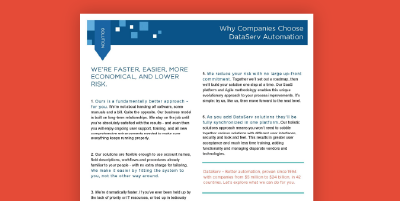The dynamic, modern business landscape requires maintaining robust financial health regardless of company size. A sound financial foundation empowers organizations to weather difficult times, seize growth opportunities, and ensure long-term viability. Accounts Payable (AP) solutions play a pivotal role in financial health. In this blog, we’ll explore the significance of AP automation, the advantages of gaining visibility into payment cycles, and the critical role of accurate forecasting, as well as gain a better understanding of what financial health for businesses truly means.
Understanding Financial Health and AP Solutions
Financial health is the lifeblood of any business. It encompasses a company’s ability to manage its financial resources effectively, sustain operations, and grow steadily. Efficient AP processes are integral to maintaining financial health.
With the right AP solutions, organizations can streamline AP workflows, enabling them to manage their financial obligations precisely. AP solutions help teams simplify complex tasks, reduce errors, and enhance the company’s overall operational efficiency.
Automating AP Processes for Improved Financial Health
Performing manual AP processing can be riddled with challenges, including:
- Manual Data Entry Mistakes: Regardless of your team’s reliability, human error is always possible. Using manual AP processes, there are likely more data errors than you’re even aware of, which can lead to underpaid or overpaid invoices or other issues and financial trouble. Manual data entry also requires dedication from valuable resources that could be better utilized for other, more essential tasks.
- Inability to Store or Manage Data: A lot of data passes through the AP department daily, from invoices and bills to a range of documents needing review. Manually storing and tracking documents is challenging and overwhelming. Depending on volume, you may need a substantial amount of space to store all of the documentation. Plus, you would need resources to keep those files organized if you need to refer back. Simple reports or double-checking vital information can become extremely difficult and time-consuming without a solid information management system for AP data.
- Slow Approval Process: Invoice approval is necessary as it’s how invoices get paid. Despite its necessity, it shouldn’t be a long, slow, or frustrating process for you or the companies you work with. Slow approvals cause delays in invoice payments that, in turn, can make future interactions with suppliers difficult.
- Fraud Vulnerability: Billing fraud is considered the most common form of asset misappropriation and one of the biggest AP problems for many companies. This includes check tampering and invoices that don’t match other business expenses. Too many people working with accounts make it much more difficult to spot potential problems, allowing them to happen more frequently or remain undetected indefinitely.
- Lack of Visibility: You should be able to track the progress of payments that your organization issues. Monitoring throughout the process can be difficult if you still use paper records. Paper also makes sharing necessary information with suppliers or other individuals challenging. Some companies and vendors still require paper invoices for various reasons, which can, unfortunately, create a barrier for companies trying to go fully digital, keeping some manual tasks necessary.
Thankfully, by automating specific AP tasks, you can reduce or eliminate these challenges for your company. Some of the functions that should be automated include:
- AP Data Entry
- Invoice Processing
- Vendor Relationship Management
- Payment Execution
Automating these AP processes brings a host of benefits for your business, such as:
- Cost Savings: Automation eliminates the need to input invoice data into content management systems manually. It also reduces the cost per invoice for your business.
- Increased Efficiency: Invoices don’t need to sit on a desk or linger in an inbox awaiting review. Automation reduces the time and resources required for managing invoices, balance sheets, and recurring expenses so AP departments can adopt faster, more effective ways of handling invoices and processing vendor payments.
- Improved Accuracy: Automated data capture helps prevent data entry mistakes, misfiled invoices, and other human errors that may harm vendor relations. The extraction, classification, and validation of structured data from unstructured content is efficiently handled by optical character recognition (OCR), artificial intelligence (AI), and ML technology.
- Customized Integrations: A SaaS AP automation solution can be customized and integrated with existing databases, financial components, and other ERP applications. This customization eliminates the need to enter the same data across several systems repeatedly, and the associated data can be accessed easily.
- Strengthened Vendor Relationships: Automation helps businesses improve collaboration with vendors and easily manage capital and cash flow. It also improves processing efficiency and saves costs for your business.
- Scalability: Scalable AP software provides freedom and flexibility to grow and maintain process efficiencies, seamlessly managing business expansion and increases in invoice volume.
- Greater visibility and Collaboration: Automation offers increased visibility into AP processing and removes the reliance on manual, paper-based systems to deliver a clear view of invoices and where payments are made. Greater transparency allows more informed decision-making and easier identification of possible delays, spending control, and on-time payments. This collaboration also means your business has more cohesive, engaged teams that can focus on critical parts of the process for a stronger workforce.
- Standardization: Automation empowers your business to create customized workflows to align with the unique needs of your business.
- Ensures Compliance: Automation allows your business to stay compliant keep up with evolving technologies and ensure your business doesn’t have issues related to industry regulations.
Gaining Visibility Into Payment Cycles
Understanding payment cycles and managing cash flow are critical to maintaining financial health. AP solutions provide real-time visibility into payment statuses, allowing businesses to make informed decisions and allocate resources effectively. With this visibility, you can better manage your company’s cash flow.
Cash flow management focuses on three key objectives: closely monitor cash transactions, plan capital expenditures, and minimize operating costs while meeting necessary expenses. Working to achieve these goals helps your business meet payment due dates and maximize liquidity to reduce cash outflow and avoid unnecessary expenses. Maintaining an optimal cash balance can even prevent bankruptcy.
Accurate Forecasting For Better Financial Planning
Forecasting is the basis of every financial decision your company will make within a given period. Accurate financial forecasting is like a compass that guides your business toward growth. AP solutions leverage historical data to create reliable financial forecasts. This helps manage working capital, set realistic goals, and effectively mitigate risks. The process also provides insight into the overall financial health of your organization.
Financial forecasting helps your business in various areas, including:
- Budgeting
- Creating accountability
- Informing strategic decisions
- Improving risk evaluations
- Supporting planned, consistent growth
Real-World Example: Wente Family Estates and the Power of AP Automation
To illustrate the real impact of AP automation, consider the case of DataServ client Wente Family Estates, a well-established winery that faced significant challenges as the business grew. As Wente expanded by over 30 percent annually, their manual accounts payable processes became increasingly cumbersome. The winery’s previous AP system–relying on paper-based workflows–led to delays, human errors, and lost invoices, impacting vendor relationships and slowing down payments.
Recognizing the need for a more scalable solution, Wente turned to DataServ. Our automation solution – tailored to Wente’s specific business needs – streamlined their AP workflows by capturing, validating, and routing invoices through a fully automated system. This eliminated the need for manual data entry, reduced invoice approval times, and enhanced data visibility across the organization.
The results? Wente experienced:
- Faster invoice processing and approval times, reducing the time it took to pay vendors.
- Increased accuracy and fewer errors, leading to improved vendor relationships.
- 30+ days of visibility into their payment processes.
- The ability to take advantage of early payment discounts, contributing to additional savings for the business.
By automating their AP processes, Wente gained operational efficiency and greater visibility into their financial data, enabling them to make informed decisions and maintain better cash flow management. The case of Wente Family Estates exemplifies how implementing a robust AP automation solution can help businesses overcome common challenges and drive long-term financial health.
Best Practices for Choosing and Implementing AP Solutions
Selecting the right AP solution is crucial. Factors like scalability, integration capabilities, and user-friendliness should be considered. Implementing AP solutions successfully requires careful planning and execution.
To successfully implement AP solutions, following the steps below will ensure a seamless transition:
- Evaluate your current AP processes and needs
- Build a business case for automation
- Obtain stakeholder buy-in to the business case
- Identify and document requirements
- Choose an AP automation partner
- Create and execute an implementation plan
- Test the AP solution and train employees
Optimize Your Business’ Financial Health with AP Solutions by DataServ
The key to a financially healthy business is seamlessly managing your AP processes. AP solutions are essential in achieving this goal. Your business can confidently navigate financial challenges by automating, gaining visibility, and forecasting accurately.
For a reliable AP automation partner, choose DataServ. Our professional team will help your business unlock the potential of greater financial health. Contact us today or request a demo to learn how our solutions can help.







